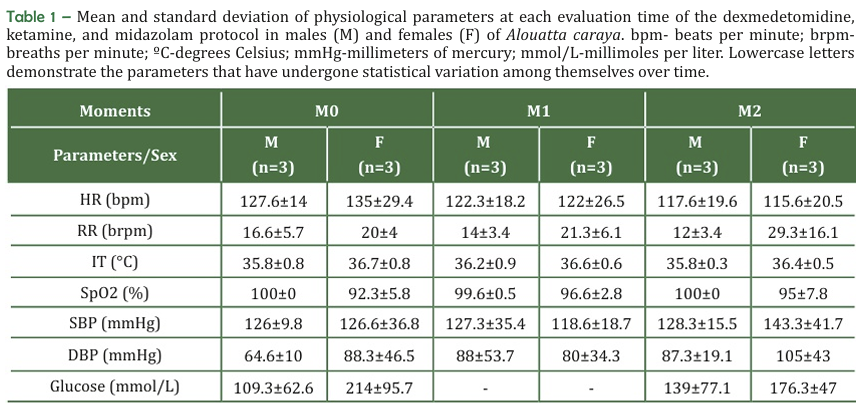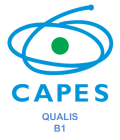New chemical restraint protocol in Alouatta caraya in captivity
DOI:
https://doi.org/10.21708/avb.2025.19.1.12798Abstract
The black howler (Alouatta caraya) is an excellent study model for its similarity to anthropoid primates, including humans. Therefore, studies on the chemical restraint of these animals is essential. The objective of the present study is to evaluate the quality of sedation and anesthetic recovery in the chemical restraint of A. caraya under human care. Six adult animals were used, being three males (7.5±1.24 kg) and three females (4.53±0.40 kg). All were healthy A. caraya residing at the Brazilian Primate Center (CENP), where the combination of ketamine hydrochloride (7.5 mg/kg), midazolam (0.3 mg/kg), and dexmedetomidine hydrochloride (0.015 mg/kg) was tested, followed by reversal with atipamezole (0.03 mg/kg). The heart rate (HR), respiratory rate (RR), internal temperature (IT), SpO2, systolic and diastolic blood pressures (SBP/DBP), and mean arterial pressure (MAP) parameters were evaluated at three different times, and glycemia at two different times, during a 30 minute period, in addition to recovery status. Statistical variation was observed in HR, IT, and glycemia, which reduced over the observed time, but without losses that required intervention during the procedure. The recovery was smooth and the animals returned to their original enclosures without incident. The use of this protocol is recommended for chemical restraint of captive A. caraya.
Downloads

Downloads
Published
Issue
Section
License
Copyright (c) 2025 Acta Veterinaria Brasilica

This work is licensed under a Creative Commons Attribution 4.0 International License.
Autores que publicam na Acta Veterinaria Brasilica concordam com os seguintes termos: a) Autores mantém os direitos autorais e concedem à revista o direito de primeira publicação, com o trabalho simultaneamente licenciado sob a Licença Creative Commons Attribution que permite o compartilhamento do trabalho com reconhecimento da autoria e publicação inicial nesta revista. b) Autores têm autorização para assumir contratos adicionais separadamente, para distribuição não-exclusiva da versão do trabalho publicada nesta revista (ex.: publicar em repositório institucional ou como capítulo de livro), com reconhecimento de autoria e publicação inicial nesta revista. c) Autores têm permissão e são estimulados a publicar e distribuir seu trabalho online (ex.: em repositórios institucionais ou na sua página pessoal) a qualquer ponto antes ou durante o processo editorial, já que isso pode gerar alterações produtivas, bem como aumentar o impacto e a citação do trabalho publicado (Veja O Efeito do Acesso Livre).


 Esta obra está licenciada com uma Licença
Esta obra está licenciada com uma Licença 